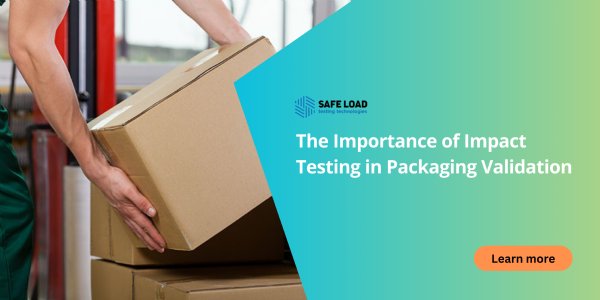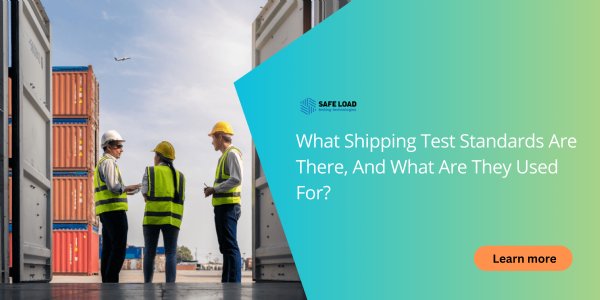In the modern and ever-changing environment, characterized by complex supply networks and international commerce, ensuring the quality of food items while they are being transported continues to be a crucial issue for global enterprises. As a result, the significance of performing tests on food packaging becomes extremely noteworthy.
The Role of Food Packaging: Beyond Containment
Food packaging refers to the materials used to encase food items, designed to preserve the flavor and excellence of the food throughout handling and transit, as well as throughout the product’s time on the market. In simpler terms, food packaging safeguards the advantages gained from food processing even after the manufacturing process is finished. This enables food products to endure extended journeys from their source location while still retaining their superior quality when consumed.

The primary objectives of food packaging encompass several aspects. These include shielding the food against external elements and harm to ensure its edibility for an extended duration, serving as a container for the product, offering consumers essential nutritional details about the provided food, and contributing to the reduction of security risks during shipment.
Selecting Packaging Materials for Excellence
In the intricate tapestry of packaging, materials play a role far more critical than mere aesthetics. Glass, metal, plastic, and paper stand as the traditional pillars of food packaging, each with its unique attributes:
Glass: Known for its longevity and reusability, glass has stood the test of time. However, it poses weight and fragility challenges, increasing transportation costs and breakage risks.
Metal: The versatility of metals, especially aluminum and tinplate, offers a fusion of protection, barrier properties, and recyclability. These materials find their way into everything from soft drink cans to processed food containers.
Plastic: With its lightweight and cost-effectiveness, plastic is a contemporary favorite. However, it’s susceptible to light, gases, and vapors, and its environmental impact has drawn scrutiny.
Paper and Paperboard: Although less frequent as primary packaging, paper and paperboard excel in shipping containers and takeout packaging due to their sturdiness.
Navigating the Complexity of Transportation
In the current era of heightened international trade and the prevalence of online shopping, the transportation of food products across vast distances has become commonplace, thanks to the advancement of more efficient transportation methods. This shift has spurred the development of innovative packaging designs that are not only more robust but also eco-friendly.
However, within this intricate distribution process, there exist various potential risks and hazards that the goods can be exposed to. These range from sudden movements like vibrations, accelerations, and decelerations, to the effects of climate change and biological factors such as mildew, mold, rodents, insect pests, and spills.
The significance of appropriately packaging food products for safe transportation cannot be understated. Neglecting proper packaging practices not only endangers the goods but can also amplify risks for those responsible for their distribution. Moreover, it jeopardizes the integrity of the entire transportation process and the safety of the items being conveyed.
To mitigate the risks associated with inadequate food packaging during transportation, meticulous planning and stringent control measures are imperative. Implementing effective strategies for storing and transporting products with regard to food packaging can greatly enhance food safety. Here are some key strategies to consider:
Understanding Product Requirements: Each product being transported has unique preservation requirements. Some items necessitate refrigeration, while others must be shielded from light. It is crucial to be well-versed in these specific conditions and adhere to them meticulously to ensure the products remain protected.
Monitoring Storage Time: The passage of time significantly impacts the safety of food products. Rigorous monitoring of storage durations is essential to prevent excessive storage times, which can compromise the quality and safety of the food.
Maintaining Hygiene Practices: Adhering to proper hygienic practices during the handling of goods is pivotal to prevent contamination and preserve food safety.
Reinforcement and Palletization: When placing products on pallets, consider using reinforcements such as tertiary packaging film, shrink film, anti-skid film, or grouping packaging. These measures not only safeguard individual items but also contribute to the overall stability of the cargo.
Optimized Packaging Design: Creating or optimizing food packaging to fulfill all requirements for load protection is paramount. This involves considering factors such as shock absorption, moisture resistance, and climate adaptability.
Thorough Testing: Rigorously test the food packaging to ensure it meets all the necessary criteria. Utilizing transport simulation technologies is instrumental in identifying the optimal packaging solutions that can withstand the challenges of transportation.
Revolutionizing Packaging Optimization through Simulation
Packaging is no longer just a covering for food products; it’s a shield that safeguards the integrity, freshness, and safety of what’s inside. The testing process is the checkpoint that packaging materials must pass through to ensure they’re up to the task. But what exactly does this testing entail?
An Array of Essential Tests
A battery of meticulous tests is designed to ascertain the usability and safety of food packaging materials. Some of the paramount tests include:
- Chemical Testing: Assessing the compatibility of packaging materials with the food they will encase, ensuring no harmful substances leach into the product.
- Environmental Compliance: Evaluating whether the packaging adheres to environmental regulations, contributing to sustainability efforts.
- Functional Evaluation: Testing the packaging’s ability to fulfill its purpose, such as resistance against punctures, effective sealing mechanisms, and more.
- Migration Testing: Ensuring that packaging materials do not migrate into the food product, maintaining the product’s purity.
- Environmental Conditioning: Simulating the temperature and humidity variations that packaging might face, predicting its resilience over time.
- Anticipating Misuse: Assessing potential misuse scenarios, especially those involving children, to enhance design safety.
- Physical Hazard Testing: Identifying risks like tearing or swallowing packaging parts, and safeguarding consumers.
Challenges in Transportation
Beyond ensuring the packaging’s immediate safety, it’s crucial to consider the transportation trials. Various testing methods focus on secondary and tertiary packaging to guarantee products survive the distribution cycle intact. These tests include:
Horizontal or Inclined Impact:
Replicating shocks products might encounter during transit, evaluating packaging’s protective capacity.
Drop Test:
Simulating potential drops from various angles, mimicking real-world scenarios that can compromise goods’ safety.
Vibration Test:
Mimicking transportation-related vibrations, including pitch and roll motions, that products endure.
Compression Test:
Gauging a package’s ability to endure compression forces during distribution, guiding stacking practices.
Clamp Test:
Measuring a package’s resilience against horizontal pressures in automated warehousing, is vital for platforms like Amazon’s compliance requirements.
Customer Success Story: Revolutionizing Banana Transportation with Packaging Optimization
In the heart of the tropical landscape, a banana-producing company faced a vexing challenge that threatened both its profits and reputation: packaging losses during transportation. The company’s journey toward success didn’t just involve packaging; it entailed a transformative partnership with Safe Load Testing Technologies to reimagine transportation efficiency.
The Initial Struggle,the company’s bananas embarked on a journey fraught with peril, facing the trials of road transportation.
However, it became evident that the packaging wasn’t able to withstand the vibrations inherent in this journey. As a result, losses were accumulating at an alarming rate. With an intricate analysis of the packaging used, the transportation route, and the trucking conditions, the root of the problem was uncovered: inadequate packaging resilience.
Crafting Tailored Solutions and armed with insights from this analysis, the company teamed up with Safe Load Testing Technologies to engineer a holistic solution. The approach began with an overhaul of the existing packaging system. While this introduced a slight increase in the cost per case due to the integration of higher-quality packaging materials, it was a strategic investment with promising outcomes.
The transformative aspect of this partnership was the implementation of transport simulation tests. These tests replicated the real-world challenges faced by bananas during transportation, providing a comprehensive understanding of packaging’s ability to withstand these forces.
The Turning Point: Transforming Losses into Savings
The results were nothing short of remarkable. The new packaging system showcased a heightened capacity to withstand the trials of transportation. Though the cost per case saw a modest increase due to the integration of advanced packaging materials, the returns were exponential. With losses reduced by 3%, the savings were unprecedented.
The impacts rippled through the company’s operations. Waste costs plummeted from 3.7 million to 2.2 million, resulting in annual savings that soared to €1.3 million. This marked a monumental 2.8% increase in profit margins, affirming the company’s decision to invest in packaging optimization.
A New Horizon: Partnering for Future Success
This success story isn’t just a singular event; it’s a testament to the potential when innovation meets collaboration. Safe Load Testing Technologies doesn’t just offer services; we provide transformational partnerships. Our advanced transport simulation equipment, coupled with decades of expertise, enabled this banana-producing company to transcend its challenges and elevate its transportation efficiency.
Just as we partnered with this banana company to redefine its transportation narrative, we are here to partner with you. Safe Load Testing Technologies is your ally in crafting solutions that revolutionize your transportation processes, ensuring your products reach their destination with unwavering quality. Contact us today and let’s pave the way for your own success story.






